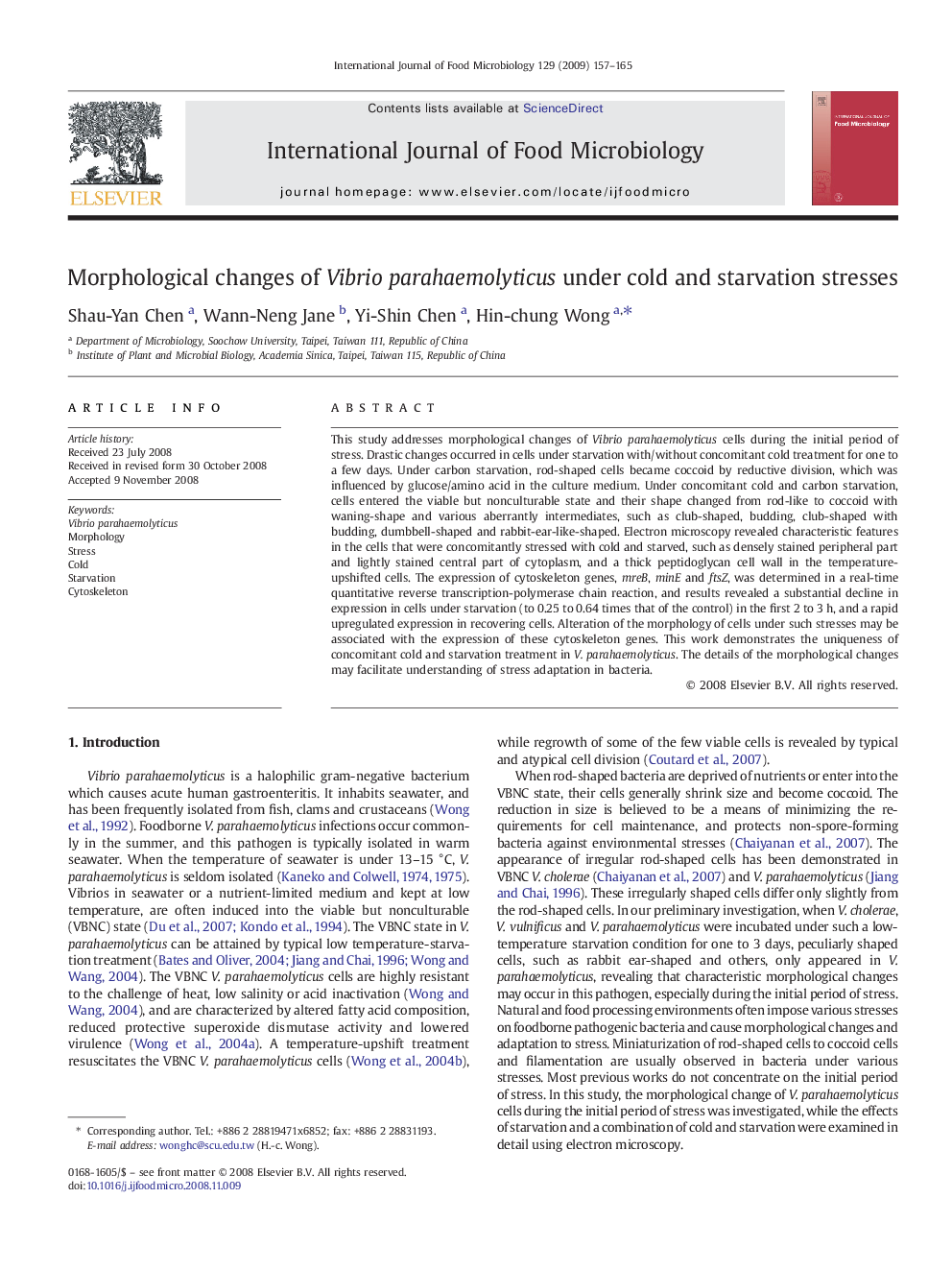| Article ID | Journal | Published Year | Pages | File Type |
|---|---|---|---|---|
| 4369172 | International Journal of Food Microbiology | 2009 | 9 Pages |
This study addresses morphological changes of Vibrio parahaemolyticus cells during the initial period of stress. Drastic changes occurred in cells under starvation with/without concomitant cold treatment for one to a few days. Under carbon starvation, rod-shaped cells became coccoid by reductive division, which was influenced by glucose/amino acid in the culture medium. Under concomitant cold and carbon starvation, cells entered the viable but nonculturable state and their shape changed from rod-like to coccoid with waning-shape and various aberrantly intermediates, such as club-shaped, budding, club-shaped with budding, dumbbell-shaped and rabbit-ear-like-shaped. Electron microscopy revealed characteristic features in the cells that were concomitantly stressed with cold and starved, such as densely stained peripheral part and lightly stained central part of cytoplasm, and a thick peptidoglycan cell wall in the temperature-upshifted cells. The expression of cytoskeleton genes, mreB, minE and ftsZ, was determined in a real-time quantitative reverse transcription-polymerase chain reaction, and results revealed a substantial decline in expression in cells under starvation (to 0.25 to 0.64 times that of the control) in the first 2 to 3 h, and a rapid upregulated expression in recovering cells. Alteration of the morphology of cells under such stresses may be associated with the expression of these cytoskeleton genes. This work demonstrates the uniqueness of concomitant cold and starvation treatment in V. parahaemolyticus. The details of the morphological changes may facilitate understanding of stress adaptation in bacteria.
